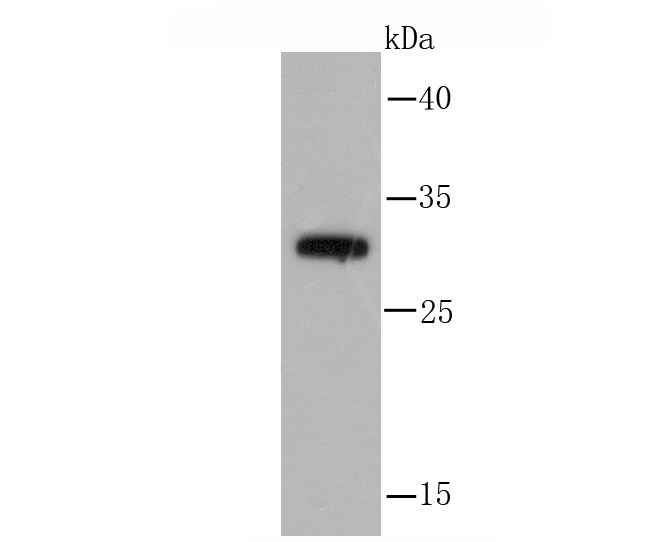
Fig1: Western blot analysis of Cathepsin D on MCF-7 cell lysate using anti-Cathepsin D antibody at 1/1,000 dilution.
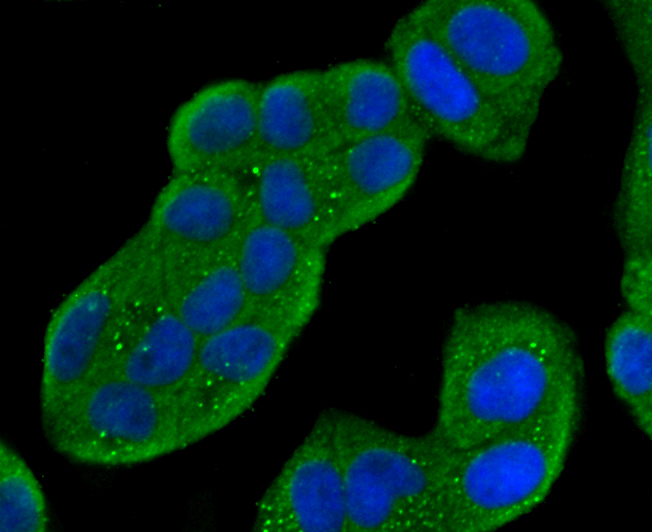
Fig2: ICC staining Cathepsin D in Hela cells (green). The nuclear counter stain is DAPI (blue). Cells were fixed in paraformaldehyde, permeabilised with 0.25% Triton X100/PBS.
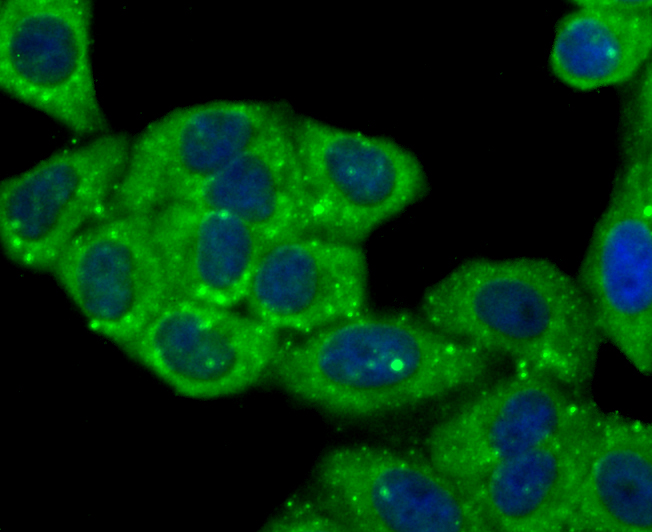
Fig3: ICC staining Cathepsin D in HepG2 cells (green). The nuclear counter stain is DAPI (blue). Cells were fixed in paraformaldehyde, permeabilised with 0.25% Triton X100/PBS.
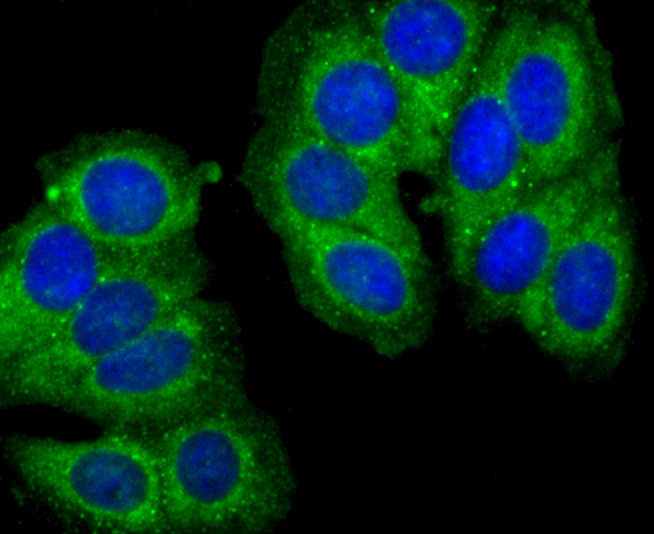
Fig4: ICC staining Cathepsin D in MCF-7 cells (green). The nuclear counter stain is DAPI (blue). Cells were fixed in paraformaldehyde, permeabilised with 0.25% Triton X100/PBS.
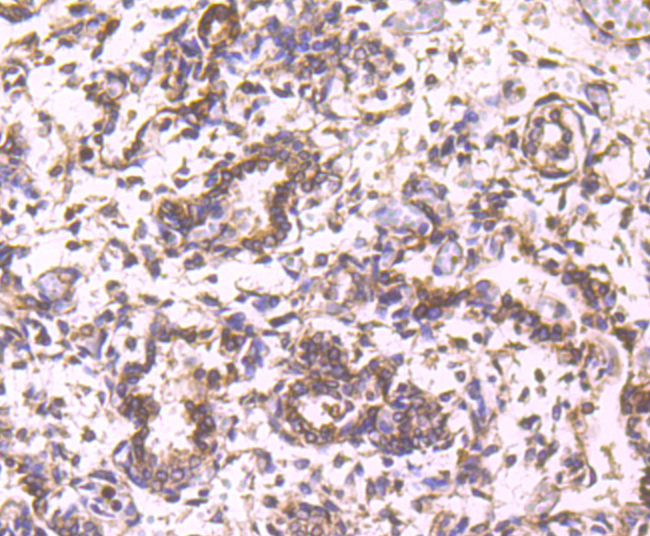
Fig5: Immunohistochemical analysis of paraffin-embedded human lung tissue using anti-Cathepsin D antibody. Counter stained with hematoxylin.
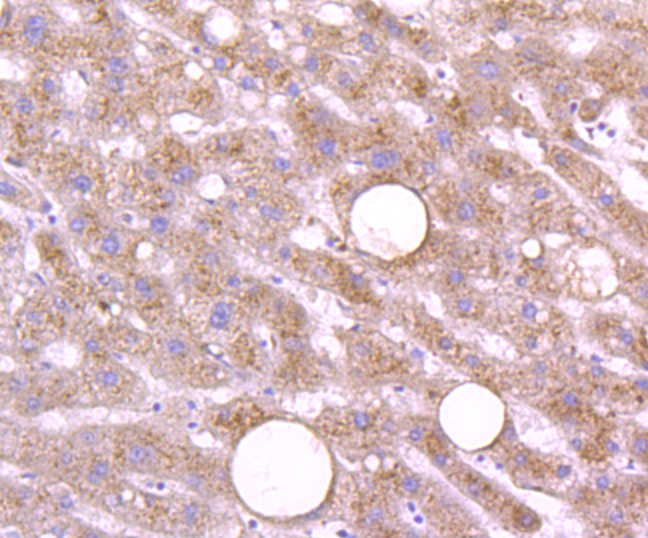
Fig6: Immunohistochemical analysis of paraffin-embedded human liver tissue using anti-Cathepsin D antibody. Counter stained with hematoxylin.
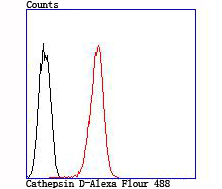
Fig7: Flow cytometric analysis of HepG2 cells with Cathepsin D antibody at 1/100 dilution (red) compared with an unlabelled control (cells without incubation with primary antibody; black).
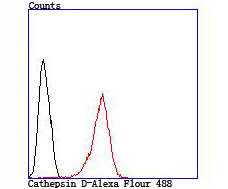
Fig8: Flow cytometric analysis of MCF-7 cells with Cathepsin D antibody at 1/100 dilution (red) compared with an unlabelled control (cells without incubation with primary antibody; black).
Product Profile
| Product Name | Cathepsin D |
|---|---|
| Antibody Type | Primary Antibodies |
| Product description |
|
| Immunogen | Peptide |
Key Feature
| Clonality | Polyclonal |
|---|---|
| Isotype | IgG |
| Host Species | Rabbit |
| Tested Applications | |
WB:1:500 ICC:1:50-1:200 IHC:1:50-1:200 FC:1:50-1:200 |
|
| Species Reactivity | |
| Concentration | 1 mg/mL. |
Target Information
| Alternative Names | CatD antibody
CATD_HUMAN antibody
Cathepsin D antibody
Cathepsin D heavy chain antibody
CD antibody
Ceroid lipofuscinosis neuronal 10 antibody
CLN10 antibody
CPSD antibody
ctsd antibody
Epididymis secretory sperm binding protein Li 130P antibody
HEL S 130P antibody
Lysosomal aspartyl peptidase antibody
Lysosomal aspartyl protease antibody
MGC2311 antibody
|
|---|---|
| Molecular Weight(MW) | 27 kDa |
| Cellular Localization | Lysosome. Melanosome. Secreted, extracellular space. |
Database Links
| SwissProt ID | P07339 P18242 |
|---|
Application
-

Application
Fig1: Western blot analysis of Cathepsin D on MCF-7 cell lysate using anti-Cathepsin D antibody at 1/1,000 dilution.
-

Application
Fig2: ICC staining Cathepsin D in Hela cells (green). The nuclear counter stain is DAPI (blue). Cells were fixed in paraformaldehyde, permeabilised with 0.25% Triton X100/PBS.
-

Application
Fig3: ICC staining Cathepsin D in HepG2 cells (green). The nuclear counter stain is DAPI (blue). Cells were fixed in paraformaldehyde, permeabilised with 0.25% Triton X100/PBS.
-

Application
Fig4: ICC staining Cathepsin D in MCF-7 cells (green). The nuclear counter stain is DAPI (blue). Cells were fixed in paraformaldehyde, permeabilised with 0.25% Triton X100/PBS.
-

Application
Fig5: Immunohistochemical analysis of paraffin-embedded human lung tissue using anti-Cathepsin D antibody. Counter stained with hematoxylin.
-

Application
Fig6: Immunohistochemical analysis of paraffin-embedded human liver tissue using anti-Cathepsin D antibody. Counter stained with hematoxylin.
-

Application
Fig7: Flow cytometric analysis of HepG2 cells with Cathepsin D antibody at 1/100 dilution (red) compared with an unlabelled control (cells without incubation with primary antibody; black).
-

Application
Fig8: Flow cytometric analysis of MCF-7 cells with Cathepsin D antibody at 1/100 dilution (red) compared with an unlabelled control (cells without incubation with primary antibody; black).
| Positive Control | MCF-7, Hela, HepG2, human liver tissue, human lung tissue. |
|---|---|
| Application Notes | WB:1:500 ICC:1:50-1:200 IHC:1:50-1:200 FC:1:50-1:200 |
Additional Information
| Form | Liquid |
|---|---|
| Storage Instructions | Store at +4℃ after thawing. Aliquot store at -20℃ or -80℃. Avoid repeated freeze / thaw cycles. |
| Storage Buffer | 1*TBS (pH7.4), 0.5%BSA, 50%Glycerol. Preservative: 0.05% Sodium Azide. |
- Related products
- Camel Growth Hormone (GH) ELISA Kit OM642709
- Camel Insulin-like growth factors 1 (IGF-1) ELISA Kit OM642708
- Human HIV-1 p24 core protein (HIV-1 p24) antibody ELISA Kit OM642706
- Antigen Repair 20X pH6.0 OM642703
- 647 labeled Tyramide OM642699
-
- ASSAY KITS
-
- SERUM
2013 © Omnimabs , All Rights Reserved.

